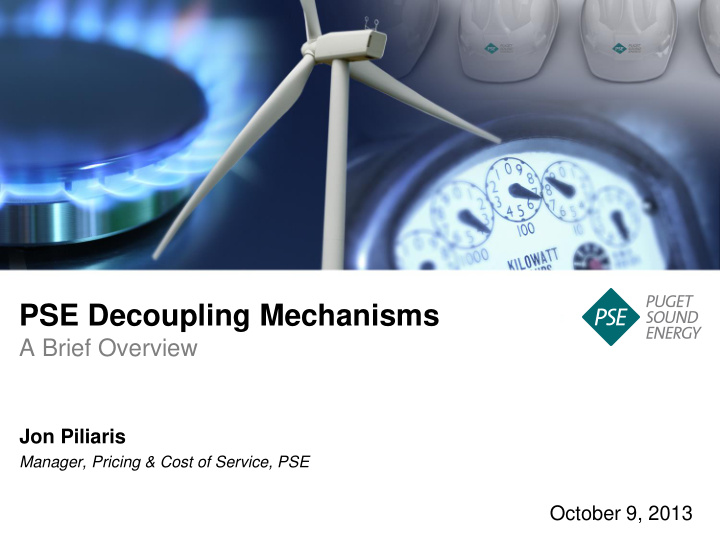



PSE Decoupling Mechanisms A Brief Overview Jon Piliaris Manager, Pricing & Cost of Service, PSE October 9, 2013
Basic Description of Decoupling Mechanisms Parallel electric and gas decoupling mechanisms Applied to the cost of energy delivery, not the energy supply Allowed revenue tied to the number of customers served Allowed revenue per customer grows annually (3% for electric and 2.2% for gas) Allowed revenue compared to actual volumetric revenue Differences trued-up in annual rate adjustment Any of the following can contribute to these differences: Energy conservation Weather variation Changes driven by the economy 2
Customers Covered by Decoupling Mechanisms Electric mechanism all but certain lighting customers and a small group of very large industrial customers Gas mechanism includes all customers charged on a volumetric basis Notable for the gas mechanism is the inclusion of gas transportation customers that are not eligible to participate in PSE’s conservation programs Two rate groups within each mechanism: residential and non- residential 3
Customer Benefits Eliminate throughput incentive on delivery system costs Commitment by PSE to achieve more conservation 5% more conservation than required by state law Voluntarily submit to statutory financial penalties for failure to achieve higher conservation levels 20% increase in low-income weatherization funding 5% increase in low-income bill assistance No general rate cases for 2-3 years 4
Customer Protections Mechanisms approved as a pilot, and may be amended based on “lessons learned” or discontinued 3 rd party evaluation of mechanism in PSE’s next rate case PSE shares 50% of any earnings above levels allowed by regulators with customers 3% cap on annual rate adjustments 5
Recommend
More recommend